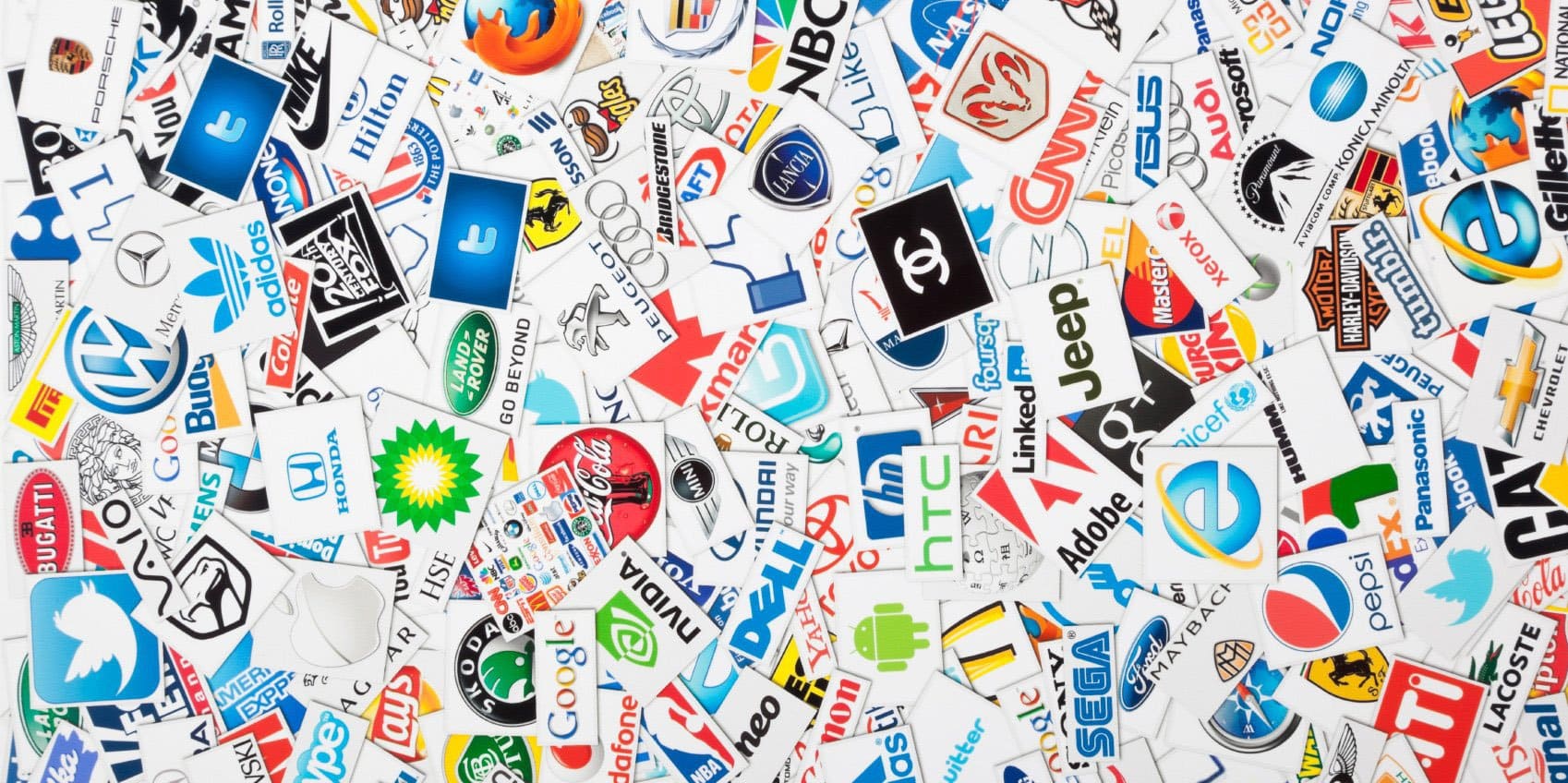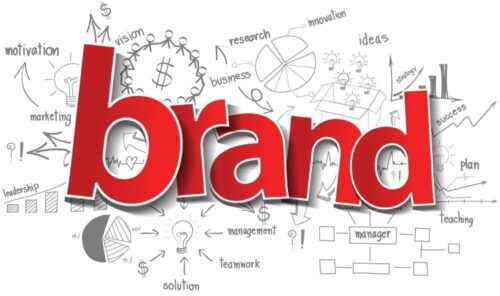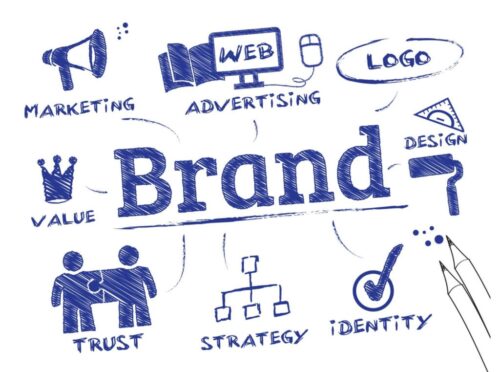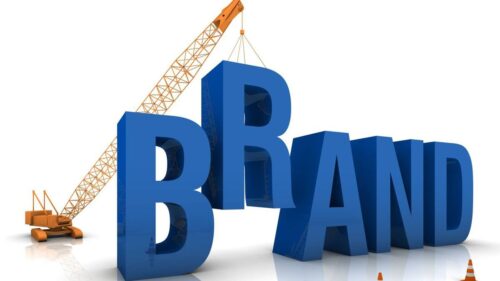A logo is more than just an image; it’s a symbol that embodies the ethos and identity of a brand. It’s the emblem that graces every product, every advertisement, and every communication from a brand, serving as a constant reminder of what the brand stands for. In a bustling marketplace, where consumers are inundated with choices, a well-crafted logo acts as a beacon that draws them in, giving them a glimpse of the brand’s story and values.
The essence of a logo lies in its ability to encapsulate the brand’s spirit and communicate it to the audience effectively. It should be a distillation of the brand’s personality, values, and aspirations, all rolled into one visually compelling and memorable design. A great logo is like a silent ambassador that speaks volumes about the brand, building a bridge of familiarity and trust with the consumers.
However, creating a logo that resonates with the audience and stands the test of time is no mean feat. It requires a delicate balancing act of creativity, strategy, and attention to detail. It’s not just about creating a pretty picture; it’s about delving deep into the brand’s core, understanding its audience, and crafting a symbol that connects with them on an emotional level.
In this in-depth exploration, we will delve into the intricacies of what makes a logo successful. We will unravel the creative process behind crafting a logo, learn from the stories of iconic logos that have left an indelible mark on the world, and arm you with practical tips to avoid common pitfalls and create a logo that truly encapsulates your brand’s essence. So, let’s embark on this journey to uncover the secrets of creating a logo that not only looks good but also tells a compelling story and fosters a strong brand identity.
What Elevates a Logo to Greatness?
At its core, an extraordinary logo encapsulates the brand’s ethos and narrates its story, transforming a mere image into a symbol that resonates with its audience. To achieve this, a logo must possess a fusion of distinctiveness, practicality, adaptability, and relevance.
The journey to greatness begins with a logo’s ability to carve out a unique identity in the cluttered marketplace. It should stand as a testament to the brand’s individuality, setting it apart from competitors with a distinct visual appeal. The amalgamation of shapes, colors, and fonts should coalesce into a harmonious design that is not just visually arresting but also meaningful.
However, beauty without functionality is akin to a ship without a compass. A great logo must be practical, easily reproducible across various mediums and scales, from billboards to business cards. The design should retain its integrity, ensuring that the brand’s message is consistently communicated, regardless of where or how the logo is displayed.
Adaptability is the third pillar that supports a logo’s greatness. In our ever-evolving world, a logo must have the flexibility to stand the test of time, adapting to changes in trends and the brand’s evolution while retaining its core identity. This adaptability extends to the logo’s ability to convey the brand’s message across diverse cultural and linguistic landscapes, transcending geographical boundaries.
Finally, relevance is the anchor that grounds a logo, ensuring that it resonates with its target audience. A logo should reflect the brand’s values, aspirations, and personality in a way that aligns with the audience’s values and expectations. It should serve as a mirror that reflects not just the brand’s story but also the story that the audience wants to hear and be a part of.
In essence, a great logo is a harmonious blend of art and strategy, a visual symphony that speaks to the audience’s hearts and minds, forging a connection that transcends the visual realm and cements the brand’s identity in the collective consciousness.
The Alchemy of Crafting a Logo
Embarking upon the creation of a logo is akin to embarking upon a voyage of discovery, where each step reveals more about the brand’s essence and how it wishes to be perceived by the world. It is an intricate dance between imagination and methodology, where the goal is to distill the brand’s ethos into a singular visual representation that speaks volumes.
The first step in this creative odyssey is a deep dive into the brand’s core. What are its foundational values? What messages does it wish to communicate to its audience? This step is pivotal, as it lays the groundwork for the logo’s conceptualization.
The next step in this intricate ballet is the selection of a style that mirrors the brand’s personality. Is the brand traditional or modern, sophisticated or playful? The style of the logo should be a reflection of the brand’s character, an extension of its personality that resonates with its audience.
Equally important is the choice of a color palette that harmonizes with the brand’s message. Colors are not just visual stimuli; they are powerful emotional triggers that can significantly impact how a brand is perceived. The right combination of colors can elevate the logo from ordinary to extraordinary, making it more memorable and recognizable.
The final step in this alchemical process is the actual design of the logo. This is where creativity takes center stage, and the brand’s essence is translated into a visual form. It is a delicate balancing act where every element, from the shapes and lines to the fonts and symbols, must be meticulously chosen to enhance the logo’s appeal and effectiveness.
In conclusion, the process of creating a logo is a magical blend of art and science, where creativity and strategy unite to birth a visual symbol that encapsulates the brand’s essence and forges a deep, lasting connection with its audience. It is a journey that requires patience, skill, and a deep understanding of the brand and its audience, but the rewards are well worth the effort.
Chronicles of Iconic Logos
The history of branding is replete with tales of logos that have not merely identified a product or company but have etched themselves into the fabric of popular culture. These emblems have transcended their initial purpose, becoming symbols of quality, innovation, and trust. Let’s delve into the fascinating narratives behind a few of these iconic logos.
Take, for instance, the sleek and timeless design of Apple’s bitten apple. The apple is a nod to the biblical story of Adam and Eve, symbolizing the acquisition of knowledge and enlightenment. The bite, meanwhile, is a playful pun on the computer term “byte,” epitomizing Apple’s pioneering role in the technological revolution.
Similarly, Nike’s swoosh is not just a swoosh; it’s a representation of the wing of the Greek goddess of victory, encapsulating the brand’s commitment to empowering athletes worldwide. The simple, fluid lines convey motion and speed, reflecting the brand’s ethos of innovation and excellence in sportswear.
Another fascinating tale is that of the golden arches of McDonald’s. The arches were initially designed as part of the restaurant’s architecture but were later incorporated into the logo. The arches symbolize the welcoming arms of McDonald’s, promising a comforting and familiar dining experience no matter where in the world you are.
These examples showcase the power of a logo to tell a story, to embody the essence of a brand, and to forge a lasting connection with its audience. They serve as a testament to the transformative power of a well-crafted logo, one that is not just a visual identifier but a storyteller that narrates the brand’s journey and aspirations.
Practical Tips for Logo Creation
Embarking on the journey of creating a logo can be both exciting and daunting. To navigate this process with ease and emerge with a logo that truly encapsulates your brand’s essence, here are some practical tips to keep in mind:
Research is Key:
Before putting pen to paper, delve deep into your brand’s identity, values, and target audience. Understand the competitive landscape and seek inspiration from logos that resonate with you.
Keep It Simple:
A logo should be simple, clean, and devoid of unnecessary clutter. The goal is to create an emblem that is easily recognizable and memorable.
Versatility is Essential:
Your logo should be versatile enough to look good across various platforms, from business cards to billboards. It should also be effective in black and white as well as color.
Color Matters:
Colors evoke emotions, so choose a palette that aligns with your brand’s message. Be mindful of cultural connotations and ensure the colors are cohesive.
Fonts Make a Statement:
The font you choose can significantly impact the logo’s personality. Opt for a font that complements the logo’s design and reflects your brand’s character.
Symbols Speak Volumes:
If you opt to include a symbol in your logo, ensure it adds value and enhances the brand’s message. Avoid generic symbols that dilute the logo’s impact.
Test Your Logo:
Once your logo is ready, test it with your target audience to gather feedback. This can provide valuable insights and help you fine-tune the design.
Legal Check:
Before finalizing your logo, ensure it doesn’t infringe on any trademarks or copyrights. A legal check can save you from potential hassles in the future.
Evolution is Natural:
As your brand evolves, your logo may need a refresh. Be open to tweaking the design to keep it in sync with your brand’s growth.
By keeping these tips in mind, you can create a logo that not just represents your brand but also tells its unique story, fostering a strong brand identity and forging a lasting connection with your audience.
Pitfalls to Avoid When Designing a Logo
Crafting a logo is a delicate balance between creativity and strategy, and there are certain pitfalls that can derail the process. Being aware of these common mistakes can help you navigate the design landscape more smoothly.
Following Trends Blindly:
While staying updated on design trends is important, blindly following them can result in a logo that quickly becomes dated. Aim for a timeless design that reflects your brand’s essence.
Overcomplicating the Design:
A complex logo can be difficult to reproduce and may lose its impact when scaled down. Keep the design simple and impactful.
Neglecting the Brand’s Identity:
The logo should be a reflection of your brand’s personality and values. Ensure that the design aligns with your brand’s identity.
Inconsistent Branding:
Your logo should be consistent with the overall branding strategy. Inconsistencies can dilute the brand’s message and confuse the audience.
Ignoring the Target Audience:
Understanding your target audience is crucial. The logo should resonate with the audience’s preferences and values.
Using Stock Images or Clipart:
A logo should be unique and original. Relying on stock images or clipart can result in a generic design that lacks personality.
Overusing Colors or Fonts:
Too many colors or fonts can make the logo appear cluttered and unprofessional. Stick to a cohesive color palette and font style.
Failing to Test the Logo:
Testing the logo with your target audience can provide valuable insights. Neglecting this step can result in a design that fails to connect with the audience.
Neglecting Legal Checks:
Failing to conduct a legal check can result in trademark or copyright infringement, leading to potential legal issues in the future.
Resisting Evolution:
As your brand evolves, your logo may need a refresh. Be open to changes that keep the logo in sync with your brand’s growth.
By avoiding these pitfalls, you can create a logo that not only visually represents your brand but also strengthens your brand identity and fosters a meaningful connection with your audience.
Expert Advice for Crafting a Compelling Logo
Creating a logo that stands out and leaves a lasting impact involves a blend of creativity, strategy, and attention to detail. Here, we offer expert insights and guidance to help you navigate the intricate journey of logo design:
Start with a Strong Foundation:
Begin by defining your brand’s core values, mission, and target audience. A solid understanding of your brand’s identity is the bedrock upon which a successful logo is built.
Simplicity Is Key:
Embrace simplicity in your logo design. Avoid unnecessary complexity, intricate details, and clutter. A clean and straightforward design is more memorable and versatile.
Color Psychology Matters:
Delve into the psychology of colors to choose a palette that resonates with your brand’s message. Each color conveys specific emotions, so select hues that align with your brand’s values.
Typography Tells a Tale:
The choice of font is crucial. Typography can evoke different moods and perceptions. Select a font that complements your brand’s personality and message.
Balance Tradition and Innovation:
Striking the right balance between tradition and innovation can create a timeless logo. It should feel fresh and contemporary while respecting the brand’s heritage.
Adaptability Is Essential:
Ensure your logo remains effective and recognizable in various contexts, from digital screens to printed materials. Test its scalability and legibility.
Feedback Is Invaluable:
Seek feedback from trusted sources, colleagues, or focus groups. Constructive criticism can reveal insights and help refine your design.
Legal Safeguards:
Protect your brand by conducting thorough trademark and copyright searches. Ensure your logo is unique and doesn’t infringe on existing intellectual property.
Stay Open to Evolution:
Brands evolve over time. Be prepared to revisit and update your logo as your brand grows and adapts to changing market dynamics.
Professional Collaboration:
If you’re unsure about your design skills or the logo’s impact, consider collaborating with a professional graphic designer or branding agency. Their expertise can be invaluable.
Incorporating these expert insights into your logo design process can enhance your ability to create a logo that not only visually represents your brand but also tells a compelling story and fosters a strong and enduring brand identity.











